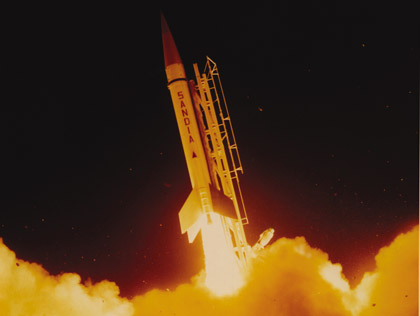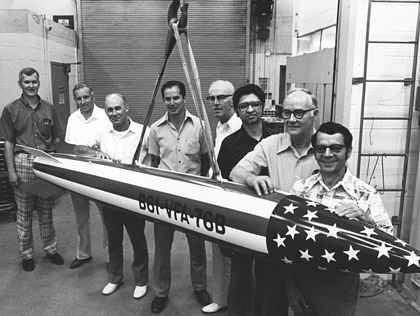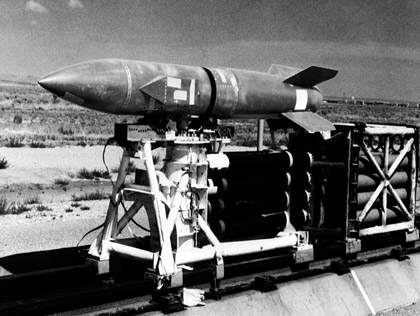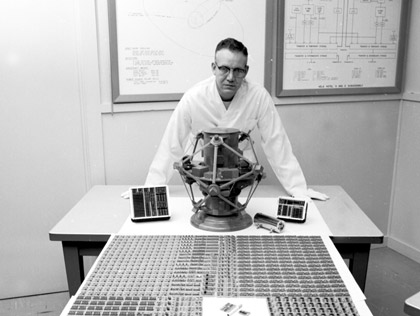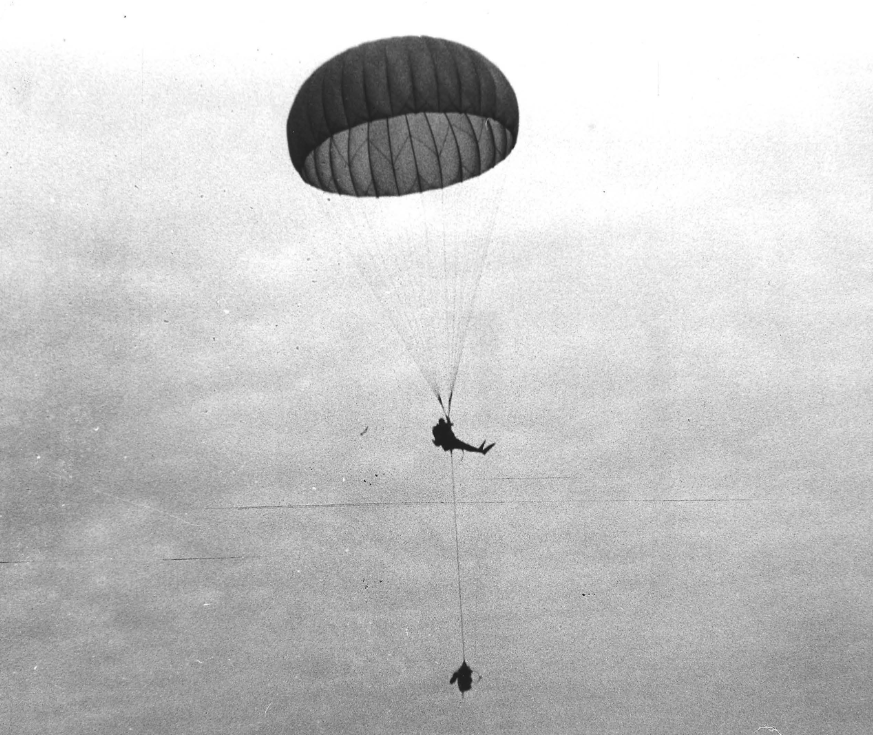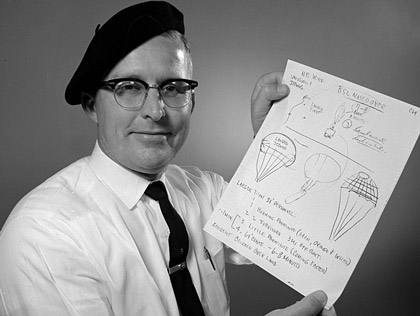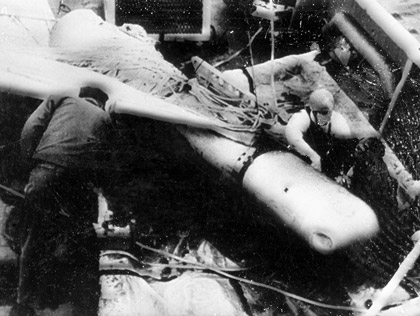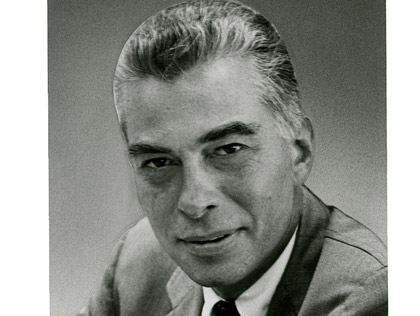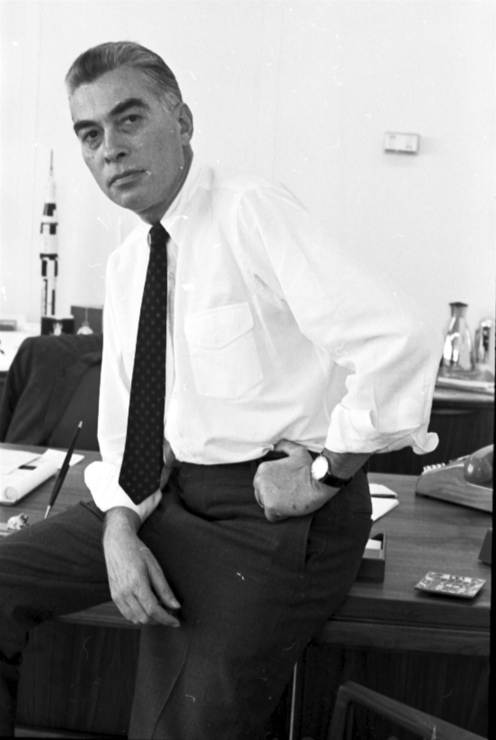1960
January 1, 1960
Sandia began studying projectiles moving through earth, or terradynamics
Sandia began studying projectiles moving through earth—a field it dubbed terradynamics—in pursuit of weapon designs that could successfully pass through different soil environments and operate underground.
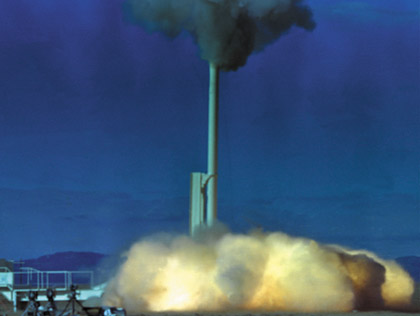
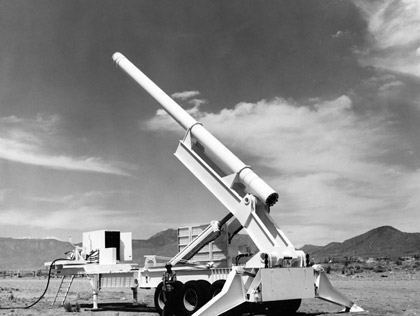
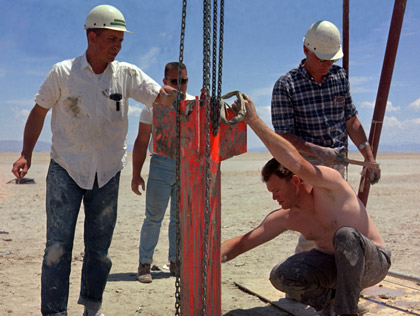
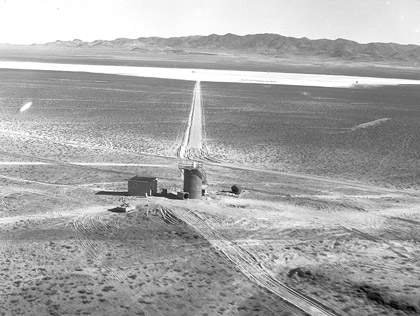
September 1, 1960
Tonopah Test Range replaced Salton Sea Test Base as Sandia’s test range
Originally selected in 1956 to support low-altitude test drops and rocket tests, the range was placed on Air Force land near Tonopah, Nevada. A series of dry lake beds running north-south provided natural targets and the weather was excellent for flying. Tonopah Test Range (TTR) operated in a campaign mode—with personnel coming from the Salton Sea Test Base to support specific test series—until 1960, when it was made Sandia’s permanent test range.
Aerial view of one of the early 30′ Contraves camera towers with a dry lakebed used as a target in the background in November 1956 when the Tonopah Test Range site was first in use.
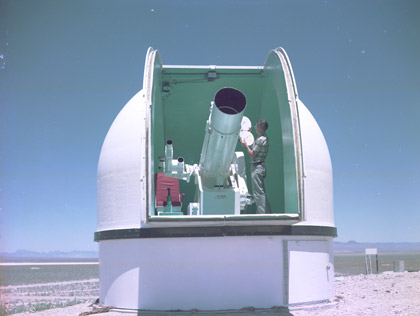
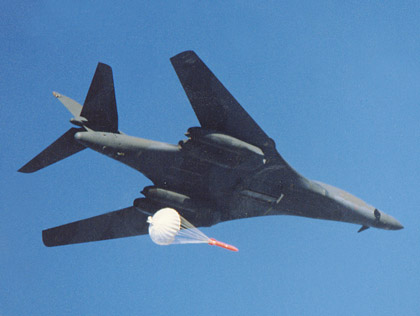
September 1, 1960
Siegmund P. “Monk” Schwartz became Sandia Corporation President
Monk Schwartz stepped into the Sandia presidency after having served as general manager under Jim McRae and Julius Molnar and thus brought a deep familiarity with the Laboratory’s operations and needs into his leadership. Contraction resulting from the US-UK-USSR nuclear test moratorium led to Sandia’s first layoffs, and Mr. Schwartz pushed for advanced research capabilities to keep the Laboratory looking and moving forward. He deftly engaged the White House on Permissive Action Link development and its required overseas deployment, a critical point in Sandia’s role in weapons safety. As the number of nuclear weapons systems in design dropped, Schwartz sought out special and reimbursable projects, including work for NASA and in support of U.S. efforts in Vietnam.
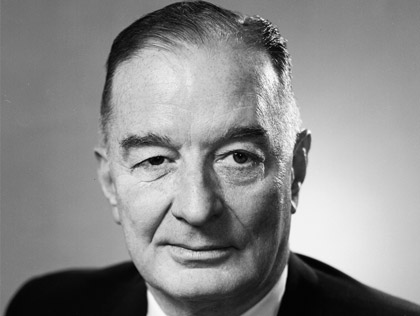
1961
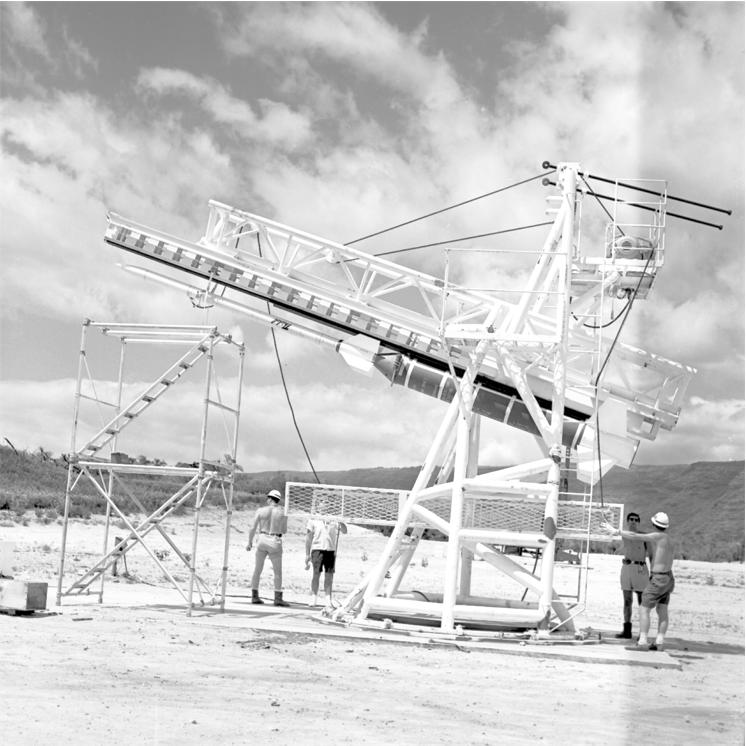
Sandia launches rockets in support of Operation Dominic from Kauai
With one day’s notice that it was ending the moratorium on nuclear testing, the Soviet Union fired a nuclear test shot on September 1, 1961. The United States immediately announced it, too, would resume testing and fired its first test on September 15 at the Nevada Test Site.
In addition to the underground tests at the NTS, in April 1962 the US announced it was beginning an atmospheric test series in the South Pacific. The Operation Dominic test series launched from and near Christmas Island and Johnston Atoll. Sandia established a test location at Barking Sands within Bonham Air Force Base on Kauai, Hawaii, to launch diagnostic rockets to measure effects of the Dominic shots. They brought in U.S. Army launchers and their own HAS launchers to launch instrumentation rockets; 68 Nike-Apache systems were launched from Kauai and 34 from Johnston Island during the test series.
After Dominic, Sandia continued to use the Kauai Test Facility. KTF was kept active in support of the Readiness requirements established by Congress in ratifying the Limited Test Ban Treaty in 1963. Readiness kept the US ready to begin atmospheric testing without delay, if necessary. Readiness ended in 1975; Sandia still uses KTF.
1962
January 1, 1962
Work starts on targeted warhead fully integrated with its reentry vehicle
Began work on an independently targeted warhead fully integrated with its reentry vehicle; subsequent contract from Navy for the Poseidon missile’s Mark 3 reentry body. In 1970, the completed design of the arming, fuzing, and firing package set new standards for miniaturization. Shown in the image, Sandia president Morgan Sparks (right) shows the arming fuzing, and firing module for the Poseidon to Director of Military Applications General Ernest Graves and Assistant Secretary of Army Norm Augustine, 1974.
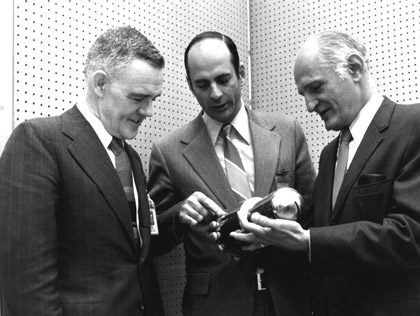
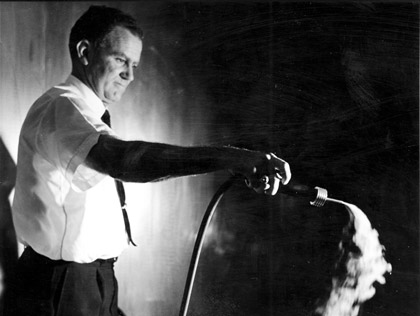
May 14, 1962
Atomic Energy Commission filed patent for Ultra-Clean Room
The Atomic Energy Commission filed a patent in the name of Sandia’s Willis J. Whitfield for the Ultra-Clean Room. U.S. Patent #3,158,457 was issued on November 24, 1964. Whitfield was assigned the problem of resolving manufacturing issues in close-tolerance parts in 1959. He developed the air flow concept—in which filtered air sweeps constantly through a workspace, resulting in about 10 changes of air per minute and continually cleaning the air of particulates. This was a significant improvement over existing clean room designs—sampling at the time indicated approximately 750 dust particles one-third of a micron in size or larger per cubic foot of air compared to average dust counts of more than 1 million particles per cubic foot of air in existing clean rooms. He and other researchers in his group developed both the clean room and clean workbench concepts, which were ultimately patented. They went on to participate in the development of Federal standards for clean room designs.
May 15, 1962
Sandia Engineering Reactor Facility opened for press tour after construction
The Sandia Engineering Reactor Facility (SERF), in Tech Area III opened for a press tour upon completion of its construction phase. SERF provided intense bursts of fast neutrons and gamma rays to use in radiation effects studies, in particular the effect of bursts and total doses of radiation on equipment.
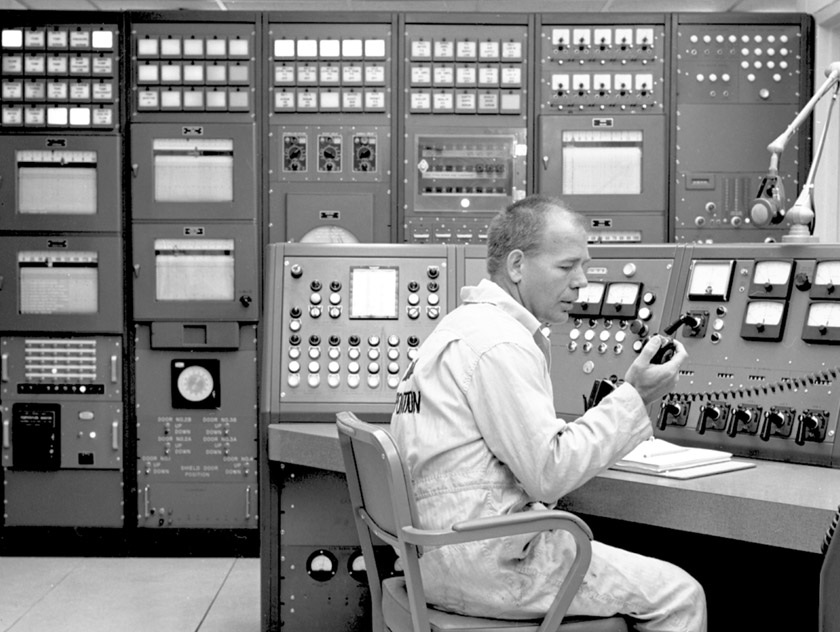
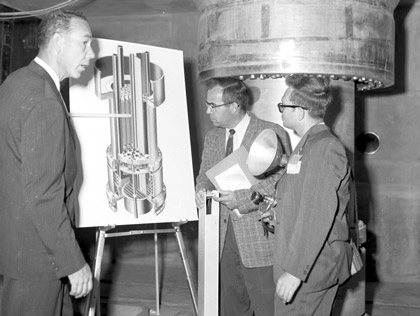
of SERF’s reactor core to newsmen Bob Brashear (center), of the Albuquerque Tribune & Bill Tucker of KOB-TV
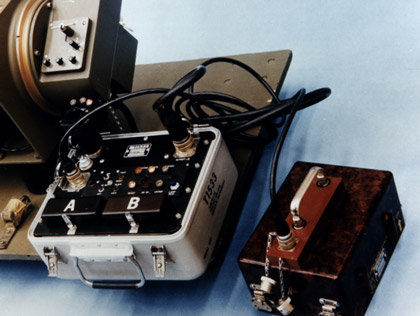
June 6, 1962
President issued Memorandum on Nuclear Weapons
July 9, 1962
Strypi rocket carried test device in high-altitude nuclear weapons test
Sandia developed the Strypi rocket that carried the test device in the Starfish Prime high-altitude nuclear weapons effects test.
